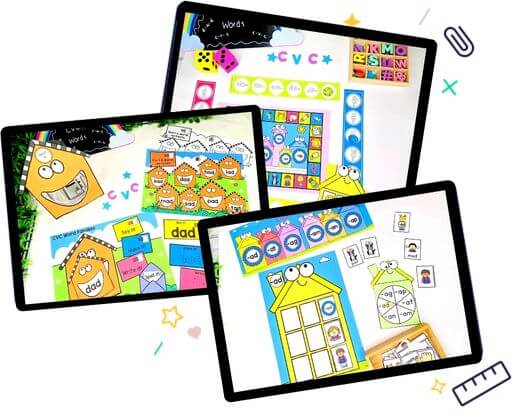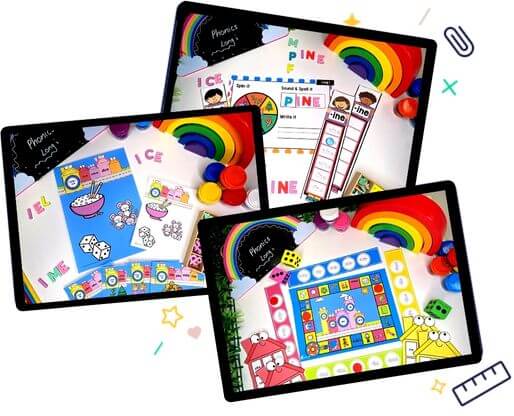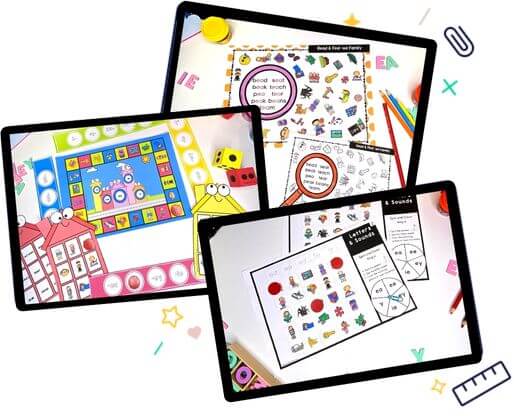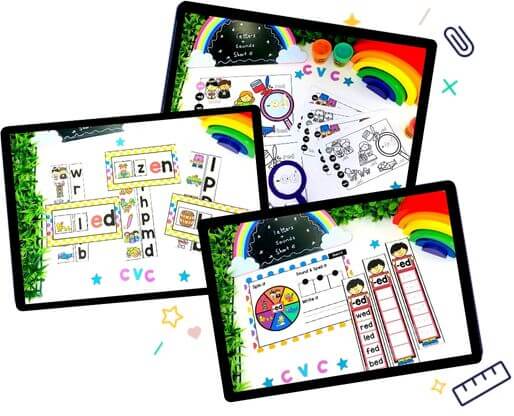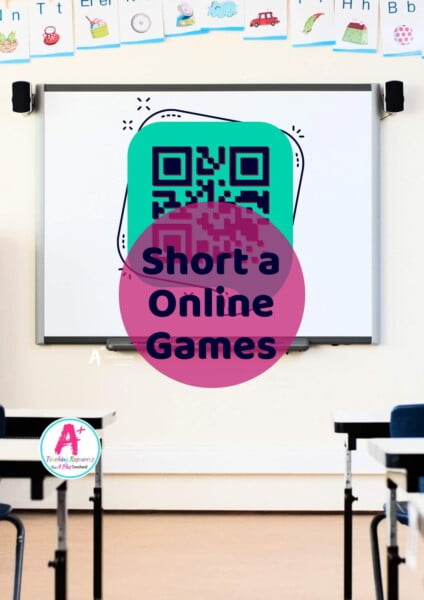CVC Word Activities
Literacy Resources
Download A HUGE range of CVC Word Activities If You Want To Get Your EYFS Students Reading In A Snip! Fun, engaging resources for teaching phonics guaranteed to inspire your students to blend and segment CVC words.
After introducing students to letters with our fun phonics activities and teaching your kids how to match letters and sounds the next step is to teach your students basic phonemic word-solving strategies to get them to decode words using segmenting and blending.
There are limitations to using only Phonemic strategies when teaching students to read, but sounds based strategies are the most effective way to introduce beginning readers to the reading process and get them reading quickly! Just don’t forget to add more strategies as students get more advanced, such as visual, morphemic & linking strategies.
But for beginners progressing to segmenting and blending is the next step of the reading process.
According to Fountas and Pinnell, in my favourite teacher resource book “Guiding Readers and Writers” this process “requires a left-to-right analysis of letter-sound relationships”. So teaching students how to split words into sounds and link the letters to their sounds is the next step in teaching kids to read! One of the easiest ways to do this is with CVC Words.
But, before you start teaching CVC words and word families make sure that your students have a strong phonemic awareness and that they understand that each letter makes a sound.
If you are unsure try our Letters And Sounds Phonics Games and resources first.
What Are CVC Words?
CVC words are three-letter words consisting of a consonant (C) , a vowel (V) then a consonant (C).
The vowel sound, in the middle of the word, is always a short vowel sound. They are really easy for kids to sound out because they don’t include any of the diphthongs or other English language complications. So these words can be read by simply blending the individual phoneme sounds together.
For this reason, CVC words are used in abundance in simple early reading books. They are easy to break apart into single sounds (segment) and put back together (blend), which makes them perfect for learning to read. Think Dr Suess, cat, mat, sat, and others live pot, run, sip, etc.
If a child knows how to make individual sounds and then blend them together. Using these skill they will be able to decode a range of simple CVC words and word families, like cat, pat, mat etc.
What Are CVC Word Families?
CVC word families are lists of words that have a common, predictable pattern or group of letters with the same sound. For example bat, cat, mat, fat. All these words are part of the short a family, but instead of teaching students to segment one word with the short a sound, if you introduce the whole family of words your students can read a lot more, a lot quicker.
CVC word families all have the same ending, and they all rhyme. This makes learning a set of words (a word family) easier on beginning readers.
Once they have spotted and heard the predictable pattern students can quickly extend their bank of know words by using the pattern to create more words in the same family.
This process helps them to build confidence, fluency and vocabulary which makes learning to read so much easier!
We have organised our CVC word Activities by long and short vowel sounds, and in each collection you will find phonics activities for the vowel sound and family. Log in and click the images below to get started.
Explore tags
CVC Words Activities
Can't find what you're looking for?
Send us a request! Use this form to request a resource. Please give details of the learning area, topic, year level, curriculum links. We’ll be happy to take a look to see if we can fit it in. Unfortunately a request does not guarantee we will be able to make it!
"*" indicates required fields

